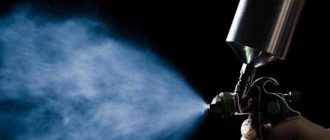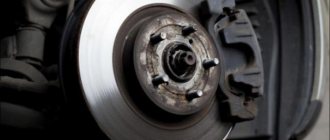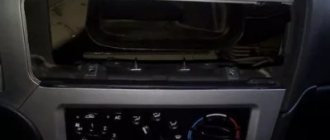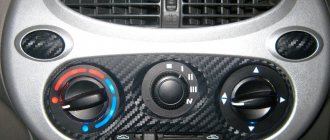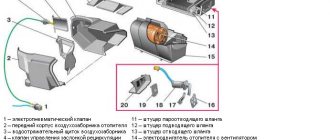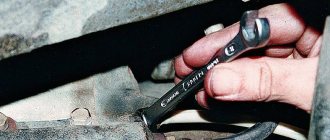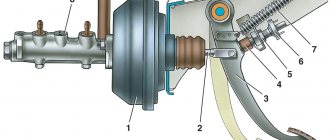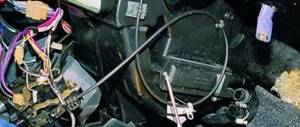Functions of the ventilation system
In order for the final painting result to be of high quality, you need to maintain an optimal level of humidity in the room, control the cleanliness and intensity of air flow. All these factors influence the result. Well-thought-out ventilation in a paint booth performs three main functions:
- Cleaning the room from toxic fumes that are inevitably released during the process. This cleaning is necessary for the safety of the operator, as accumulated vapors are not only harmful to health, but can also cause a fire or explosion.
- Constant circulation, without which it is impossible to achieve a good result - dust and various small particles will settle on fresh paint and remain in the form of stains, shagreen and other defects.
- Temperature and humidity control for various technological processes.
The installation of an exhaust system for a paint booth or garage, if work is carried out in it, is one of the most important design stages.
Primary requirements
There are ideal conditions under which the performance of the spray booth will be maximum:
- Temperature. Most paint manufacturers focus on room temperature - 22-24°C. According to the ventilation scheme, air is intensively pumped into the paint booth from the street, so it is necessary to consider a heating system.
- Directed and uniform movement of air flows. This is what ensures proper ventilation of the spray booth. With this movement, the painting will be of high quality, without damage or defects.
- Air humidity ranges from 50 to 70%. Air that is too dry will cause the paint to dry too quickly.
- Placement of the ventilation system. Experts recommend using a vertical air renewal system for the spray booth. This system involves supplying clean air through the ceiling and exhausting it through grilles in the floor. However, in non-industrial production conditions, organizing such a system is problematic. The solution is to place the hood at floor level and place the clean air supply behind the operator.
- Calculation of the air exchange rate - the ratio of the volume of removed/injected air and the volume of the room. It shows how many times in an hour the air in the paint booth is completely renewed. The requirements for the frequency of air exchange vary depending on the size of the product being painted. The larger the object to be painted, the higher the air renewal rate should be.
Compliance with all these conditions will have a positive effect on the quality of painting work.
Working principle of the spray booth
Air flow movement in the chamber
From a ventilation point of view, a paint booth is a complex system. To ensure uniform application of paint to products, the absence of streaks and the prevention of other painting defects, correctly calculated air flows must be created in the box. Therefore, ventilation and filtration of paint discharge are important elements of every paint booth.
Their use ensures the purification of air forced from outside and the air in the workroom, as well as the deposition and removal of paint mist to the outside. The principle of operation of the spray booth in painting mode is to simultaneously perform certain actions:
- Air supply to the working room at temperatures up to 30 degrees;
- Intake of exhaust air from the workroom and clean air from the street;
- Discharge of exhaust and purified air from the chamber.
The air coming from outside is cleaned of dust by passing through dust filters, and the exhaust air sucked out of the chamber is cleared of paint particles and solvent vapors before being released outside, for which paint filters are used. At the same time, the air exchange rate in the painting booth, i.e. the ratio of the air removed or supplied to the room in one hour to the internal volume of the working room, can reach up to 130-200 times per hour.
It turns out that the air in the working space can circulate, be ejected, or be supplied in direct flow.
Features of air ventilation in painting booths
There are a number of features of the ventilation system of painting boxes. These include:
- The ability to regulate the ventilation of painting booths in accordance with the current technological process - one mode is needed for painting, and a completely different one for drying.
- The best option for ventilating paint booths is to use a stacked system (supply and exhaust are separated), rather than a combined mono-system.
- In small rooms, it is quite acceptable to install a hood with natural draft and forced ventilation with mechanical ventilation. In this way, you can make ventilation in a small box or garage, which will work perfectly and meet all the requirements.
- Installing ventilation in such a way that air flows move vertically - the influx of fresh air from above, and the exhaust of exhaust air from below.
All these parameters are the same both for working with small parts and for painting a car in the garage.
What should you consider when designing?
Ideally, a paint booth is a clean, well-ventilated room with a certain and constant microclimate. To achieve this result, maximum attention must be paid to the selection and installation of ventilation for the paint booth.
During painting, a large amount of substances are released into the air: tiny particles of paint and solvent, dust and other suspended matter. Therefore, installing a good filter system is necessary. An important point: the filters must be accessible so that they can be changed as they wear out.
Even if the spray booth is equipped with the highest quality filtration system, personal respiratory protection must not be neglected.
Not only the result of the work, but also the safety of the painters depends on the accuracy of the calculations. Zones where air flows do not circulate and stagnate should not be allowed to occur. If such a zone forms at the level of the respiratory tract, it can lead to poisoning of the operator.
Operation of the spray booth
This is a specialized room in which two types of work are performed:
- applying paint and varnish coating to metal, wood and plastic surfaces. The specificity of the process is associated with the release of fine dust from paints and solvents. It does not settle, but remains suspended. This negatively affects the quality of painting, increases the likelihood of spontaneous combustion and explosion, and negatively affects the local environmental situation around the enterprise. Therefore, the station is equipped with a ventilation and air filtration system;
- cleaning metal surfaces by sandblasting. The painting booth consists of at least two rooms: the first for painting, the second for preparing the surface to be painted. Sandblasting is performed with fine abrasive materials, such as river sand. There is always a suspension of abrasive material, small particles of metal and rust in the air. They need to be filtered and fresh air supplied into the room. For this purpose, supply and exhaust ventilation with filters is installed.
Types of ventilation systems and their comparison
There are three main types of ventilation systems: single-engine, dual-engine and supply and exhaust.
The single-engine ventilation system is organized as follows: air is forced into the room from above, and draws paint mist and all heavy particles down. Filters are installed in the floor to capture all contaminants and remove them. Installation of such a system will be justified in boxes with low productivity.
Unlike a single-engine, a dual-engine ventilation system has its own characteristics of the ventilation system of painting boxes. An additional motor removes exhaust air outside. This system has much higher performance, but its installation will cost a decent amount
The supply and exhaust ventilation system of the paint booth provides several different air exchange modes. This is the most optimal type of ventilation for large volumes of work.
Supply and exhaust ventilation
This ventilation system requires careful calculation, as there is a high risk of “dead zones” - places where there is not sufficient air circulation. Under no circumstances should they be allowed to occur. Calculation is also needed to ensure that the painting equipment works correctly under different air exchange conditions.
Three operating modes:
- Air circulation to clean it and prepare it for work;
- Maintaining the room temperature at the same level;
- Drying the finished product.
Important! The power ratio of the supply fan and exhaust fan should be 3:1.
Supply and exhaust ventilation for the painting booth is recommended for installation in boxes with a large flow of orders.
Types of ventilation systems
Depending on the number of fans, there are:
- Single-engine systems - in them the channels are located at the top, the air coming from them, with its pressure, lowers the contaminated flow down, where it is removed from the chamber using natural circulation;
- Dual-motor system - it has 2 engines. One is placed in the floor channel and the second in the upper part of the chamber.
In any case, the installation of filters is mandatory, but high air exchange accelerates the contamination of the cleaning elements, then it is better to use dual-motor ventilation. Since the calculation of the power of the ventilation system is carried out for a large air flow, it is necessary to carefully consider the supply and exhaust ventilation device.
To reduce the cost of purchasing expensive equipment, if the spray booth operates irregularly, you can increase the performance of even an inexpensive ventilation system. The ventilation of the workshop is designed for this purpose, in passive and active mode.
Passive mode is necessary when drying parts. This will significantly reduce heat costs, and you can quickly remove toxic fumes from the chamber without high costs.
The active mode is used to pre-prepare the chamber, fill it with fresh air and remove dust. In addition, it is necessary to remove paint mist after drying and supply fresh air inside.
How to make a ventilation system in a paint booth with your own hands
The paint box can be purchased ready-made, but it is not cheap. A more budget-friendly option is to equip such a camera in the garage with your own hands.
The walls of the painting work area must be fireproof to avoid fire. At the very beginning of work, it is necessary to organize sufficient lighting. It is advisable that the light sources be located along the entire perimeter of the site - this will make it easier for the painter to work. The surface of the lamps must also be protected with a dense material that can withstand exposure to toxic substances (paints, solvents) and high temperatures.
Floor equipment plays a huge role. It is necessary to make trenches that will remove exhaust air and cover them with special grilles. Reinforcing mesh is suitable as metal floors, which you can make yourself.
The next stage is installing ventilation. The main thing is to correctly calculate the required air exchange. Spray booth fans are subject to high demands - they must be constantly checked for serviceability and correct operation.
Fans that will remove polluted air are placed below, in special trenches under the grille. The air supply must be done from above. It is also worth additionally installing air outlet protection with a check valve.
If possible, it is worth purchasing infrared lamps for drying the finished work. Such lamps reduce the drying time several times, and all small particles and paint mist are removed using ventilation.
Ventilation in a paint shop must be safe for the operator.
Calculation
Correct calculation is necessary to select the optimal parameters of the ventilation system. If the air supply is too intense, technological processes will be disrupted; if there is insufficient ventilation, painter operators are at risk.
To calculate the ventilation performance of a paint booth, you need to use the formula P=V×T×0.36, where T is the temperature difference between the supplied air and that required in the paint booth, V is the air volume in , and 0.36 is the expansion factor.
Knowing this parameter, it is easy to set the required air exchange mode. Calculation of optimal air exchange is carried out as follows: the volume of the working room is multiplied by the average rate of air movement.
Depending on the calculation results, you can understand which type of ventilation is suitable in a particular case. If all installation standards are followed, the spray booth will be as productive and safe as possible.

